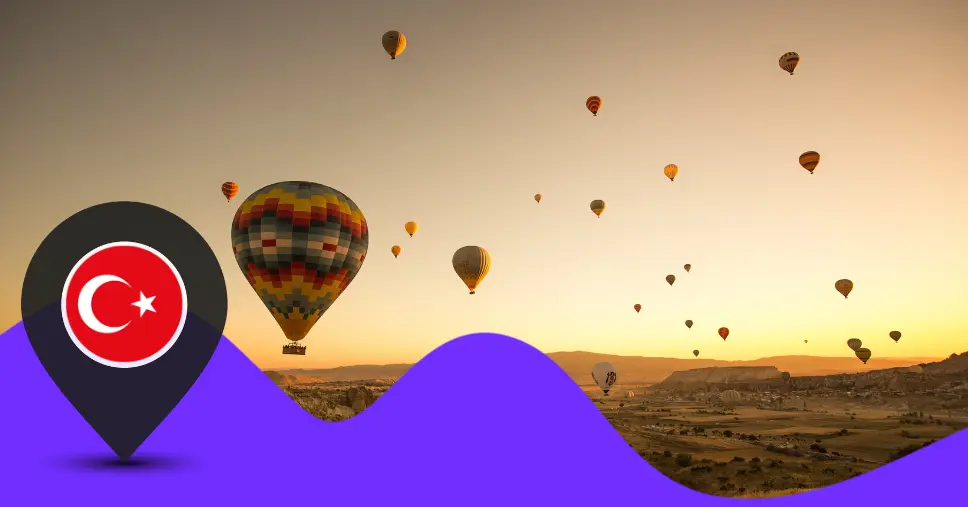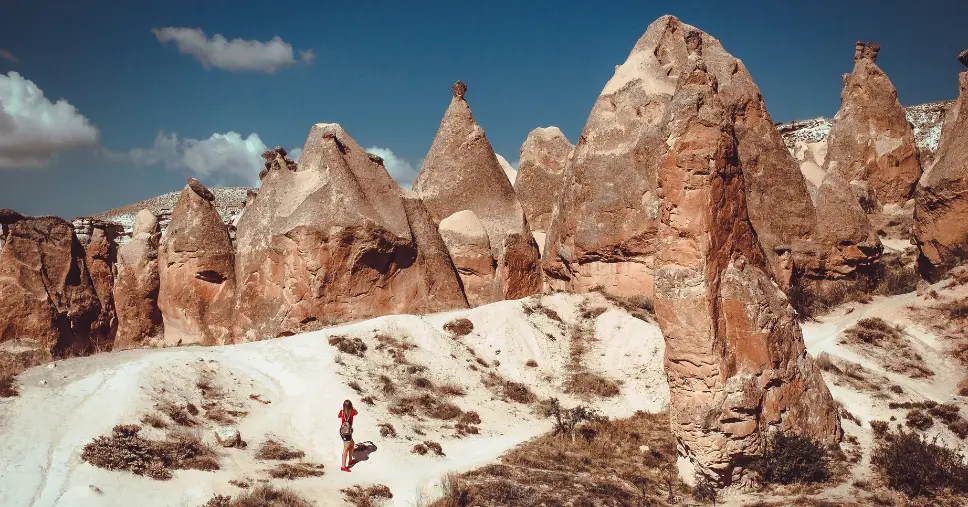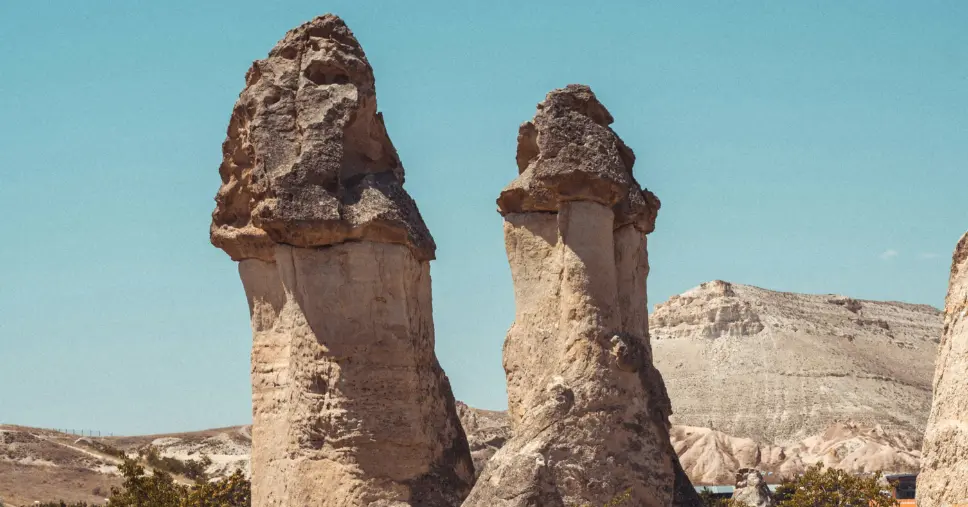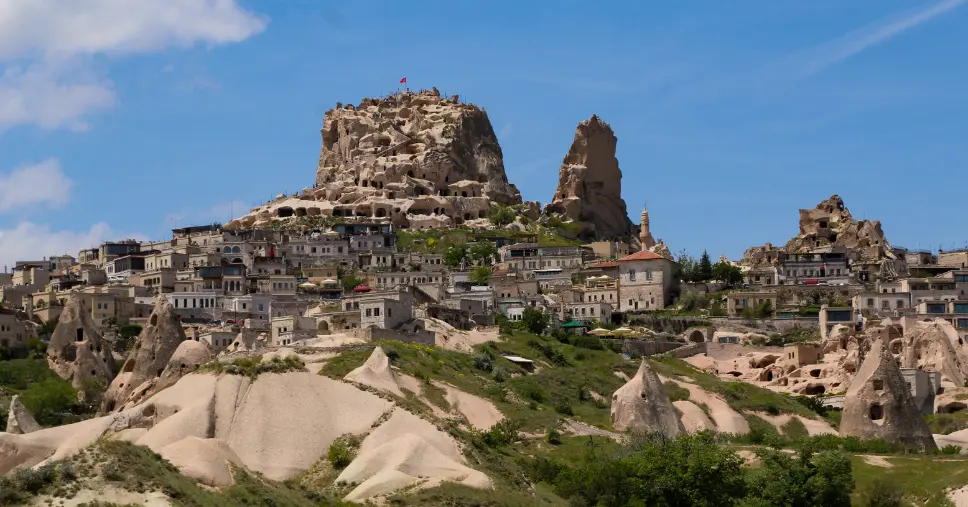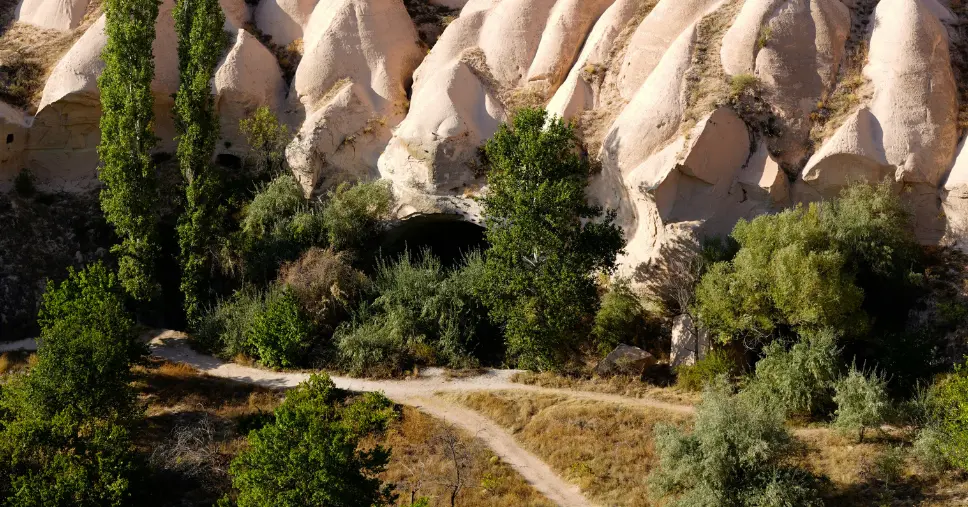
Hike Through Cappadocia’s Valleys
With its stunning landscapes, sculpted fairy chimneys, hidden chapels, and ancient cave dwellings, Cappadocia is a dream destination for hikers. The trails guide you through valleys carved by centuries of water and wind. Each of them has a unique character and level of challenge. You can explore them with or without a guide, regardless if you are a casual walker or an avid trekker. There is no better way to experience Cappadocia’s natural and cultural wonders than by hiking.
Rose Valley
Rose Valley is known for its soft pink cliffs that glow stunningly at sunrise and sunset, creating a magical atmosphere for hikers and photographers. The trail takes you through charming rock formations, tunnels, and cave churches, like the Columned Church and the Church of the Cross, making the whole journey feel like a hidden adventure. The routes are well-marked, with several short and steep slopes. Overall, the hike is moderate and rewards you with natural beauty and a glimpse into Cappadocia’s spiritual past. If you are visiting from Cavusin, entry is free. However, if you are entering from Red Valley, a ticket is required. Rose Valley is ideal for travellers who enjoy the quiet charm of less-crowded trails and variety in terrain.
Red Valley
What makes Red Valley so popular is the fiery red rock formations that come to life at golden hour, offering a remarkable sunset view. The trails in this valley combine narrow passages and open ridges – the panoramic viewpoints are perfect for short breaks and photos. The hike usually takes about two hours, and along the way, you will see small rock-carved chapels and cave dwellings. Several cafes are available, providing great views towards Uchisar Castle, and many of the tourists also like to picnic among the surrounding hills. The hike is moderate in difficulty and makes for a great workout combined with jaw-dropping vistas, especially during sunset, which is the best time for photography.
Ihlara Valley
Ihlara Valley is a lovely green canyon with a river running beneath tree-lined walkways and towering rocks. The valley is about an hour’s drive from Göreme and offers a completely different experience. The terrain is gentler, with shaded walkways and plenty of rest stops and cafes. Stone staircases will help you go down into the canyon, where you can explore the churches or enjoy the peaceful riverside ambiance. Joining a guided group from Göreme is a great idea, but you can also go by yourself. It’s far from Göreme and other valleys, and it’s not one of the things to do in Cappadocia at night, so make sure to plan it well.
Pigeon Valley
Connecting Goreme with Uchisar, Pigeon Valley is a lush and green paradise with a great view of Uchisar Castle. Its name comes from the ancient pigeon nests carved into the soft volcanic rock; people used their guano as fertiliser. The trail offers a little bit of everything — rocky pathways, forested sections, and stunning views. You will notice stone bridges and unique formations along the way, which makes the valley a popular choice for morning walks when the temperatures are cooler. It’s among the free things to do in Cappadocia, so if you are planning to visit Pigeon Valley, grab a pair of comfortable shoes and get prepared for a mid-level hike with some narrow stretches and uneven terrain.
Safety Tips and What to Bring
Before you step outside, make sure to check the weather and prepare for the rugged terrain in Cappadocia. Prioritise safety and comfort over style. Wear good hiking shoes with a good grip, a hat, sunblock, and lots of water. Phone signals can be patchy, and signage varies from trail to trail in different valleys. So, you will need a map or maybe download an offline GPS app for navigation. Some of the routes involve slippery gravel or light climbing, so don’t rush and stay safe. You can explore independently or participate in a guided hike to uncover hidden gems and stories. Whatever you pick, start early in the morning to escape the heat and the throng.
